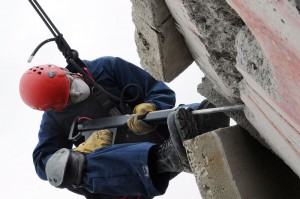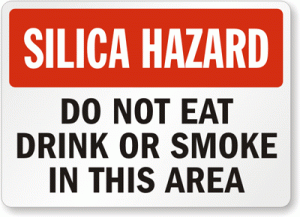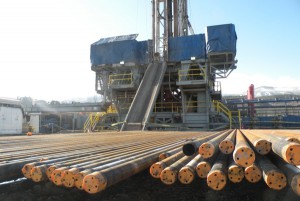Could silica protection finally enter the 21st century?

Silica dust can be a deadly occupational hazard for many workers, including those who perform concrete repair. (Photo by U.S. Navy Mass Communication Specialist 2nd Class Gary A. Prill.)
Since February 2011, a proposal that would better protect workers from crystalline silica dust – a known carcinogen – has sat in the White House’s Office of Information and Regulatory Affairs. Although the review – required by law – is not to exceed 90 days, and although the proposal merely updates 1970 standards, it received little attention.
But the two-year anniversary of its submittal has sparked awareness, anger and an increased push for its passage from lawmakers, occupational health advocates and labor unions.
Crystalline silica naturally occurs in soil, sand and granite, and workers in industries such as construction, hydraulic fracturing (“fracking”), metal-casting, and brick, pottery, glass and concrete manufacturing can be exposed to high levels of silica dust by cutting, grinding, drilling, chipping or blasting materials that contain it.
Even limited inhalation can cause silicosis – a build-up of scar tissue in the lungs, which is incurable and often fatal. Inhalation also increases a worker’s risk of developing tuberculosis and renal and autoimmune diseases, according to the Occupational Safety & Health Administration (OSHA).
In the proposal, OSHA calls to cut worker’s permissible exposure limit (PEL) to silica dust in half – saying that the current limit for general industry dates back to a 1968 formula, and the PEL for construction and shipyards was derived in 1970 and “based on particle-counting technology which is considered obsolete.”
The standard would also expand on the various precautions required of employers and workers, by enforcing stricter housekeeping requirements (such as the use of local exhaust ventilation), and implementing medical surveillance and exposure monitoring requirements.

The proposed OSHA standard would add monitoring requirements to the existing precautions for silica dust. (Image via MySafetySign.com.)
All of the details of the proposal – and the reasons that it’s now been pending for more than 800 days – have received fresh attention over the past several months:
- In a Bloomberg article in January, the director of regulatory policy at the Center for Effective Government speculated that the delay was politically motivated.
- In February, Democratic lawmakers sent a letter to the Office of Information and Regulatory Affairs (OIRA), imploring that the standard be passed.
- On March 12, OIRA held the first meeting on the topic since August 2011 – with the American Foundry Society, discussing the possible impact and concerns for the metal-casting industry.
- On March 18, another meeting was held with the National Industrial Sand Association, which endorses keeping the existing PEL and presented the projected costs of the medical surveillance and exposure monitoring requirements.
- Earlier this month, Sen. Richard Blumenthal, chairman of the Senate Judiciary Subcommittee on Oversight, Federal Rights, and Agency Action, wrote to the office’s director, saying that he is “particularly troubled” about the delay.

The increase in hydraulic fracturing operations in the U.S. makes silica dust an “emerging challenge” in the industry. (Photo by Ecopolitologist.)
- The topic took center-stage this week, at the annual American Industrial Hygiene Conference & Exposition (AIHce), held in Montreal. The dust was named one of the “Emerging Challenges in Upstream Oil and Gas Operations.” In a separate session, U.S. Assistant Secretary of Labor for OSHA Dr. David Michaels said that a proposal for silica would be released this spring, and suggested that anyone interested in the outcome attend the yet-to-be-scheduled regulatory hearings.
Category: Construction, News, OSHA














